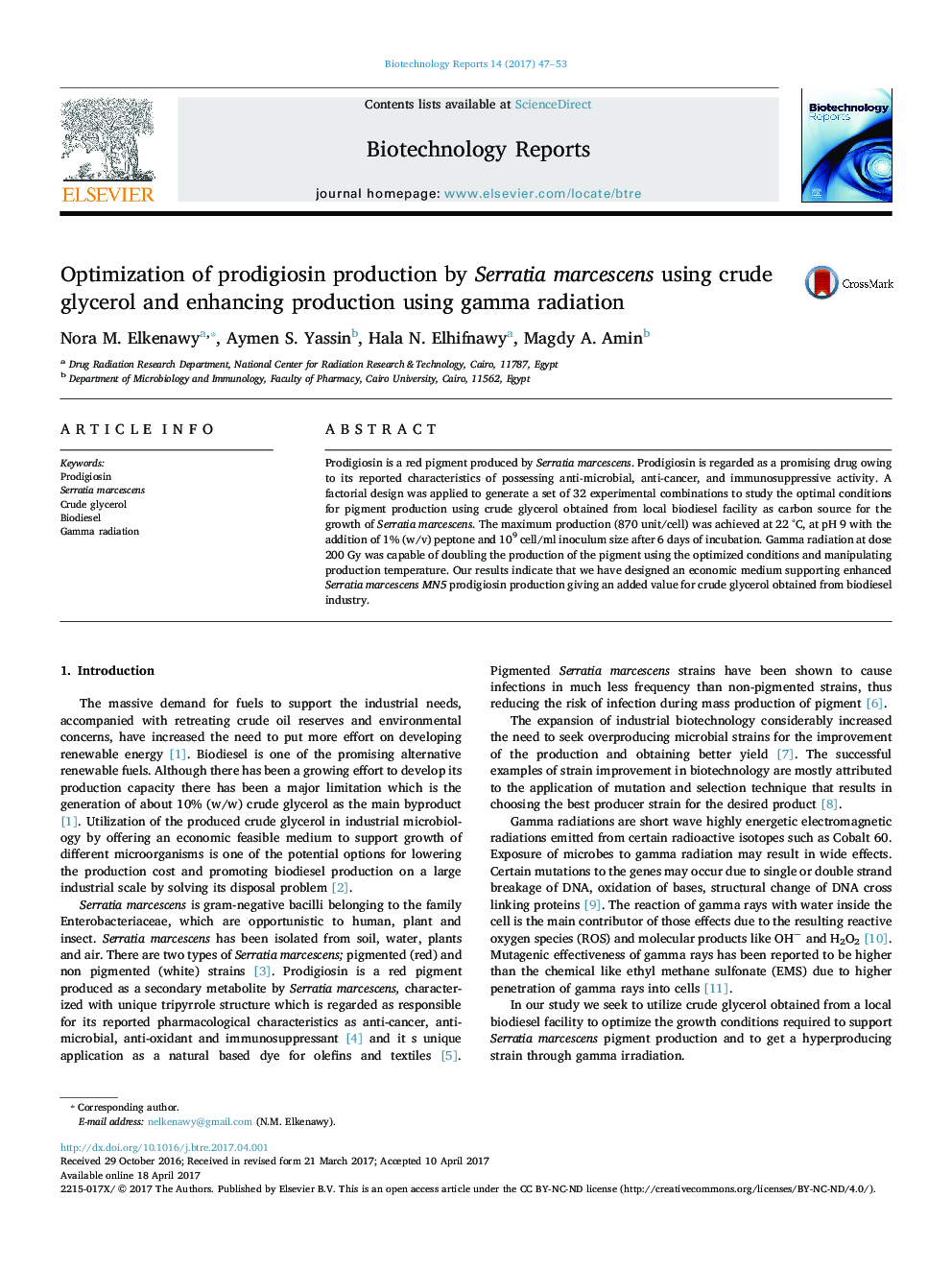| Article ID | Journal | Published Year | Pages | File Type |
|---|---|---|---|---|
| 5031786 | Biotechnology Reports | 2017 | 7 Pages |
â¢16S rDNA sequencing of seven Serratia marcescens strains.â¢Prodigiosin production using crude glycerol from biodiesel industry.â¢Identifying the optimal conditions for pigment production by factorial design.â¢Gamma radiation produced a hyper producing strain doubling pigment production.â¢Gamma irradiated strain was able to produce the pigment up to 36 °C.
Prodigiosin is a red pigment produced by Serratia marcescens. Prodigiosin is regarded as a promising drug owing to its reported characteristics of possessing anti-microbial, anti-cancer, and immunosuppressive activity. A factorial design was applied to generate a set of 32 experimental combinations to study the optimal conditions for pigment production using crude glycerol obtained from local biodiesel facility as carbon source for the growth of Serratia marcescens. The maximum production (870 unit/cell) was achieved at 22 °C, at pH 9 with the addition of 1% (w/v) peptone and 109 cell/ml inoculum size after 6 days of incubation. Gamma radiation at dose 200 Gy was capable of doubling the production of the pigment using the optimized conditions and manipulating production temperature. Our results indicate that we have designed an economic medium supporting enhanced Serratia marcescens MN5 prodigiosin production giving an added value for crude glycerol obtained from biodiesel industry.
